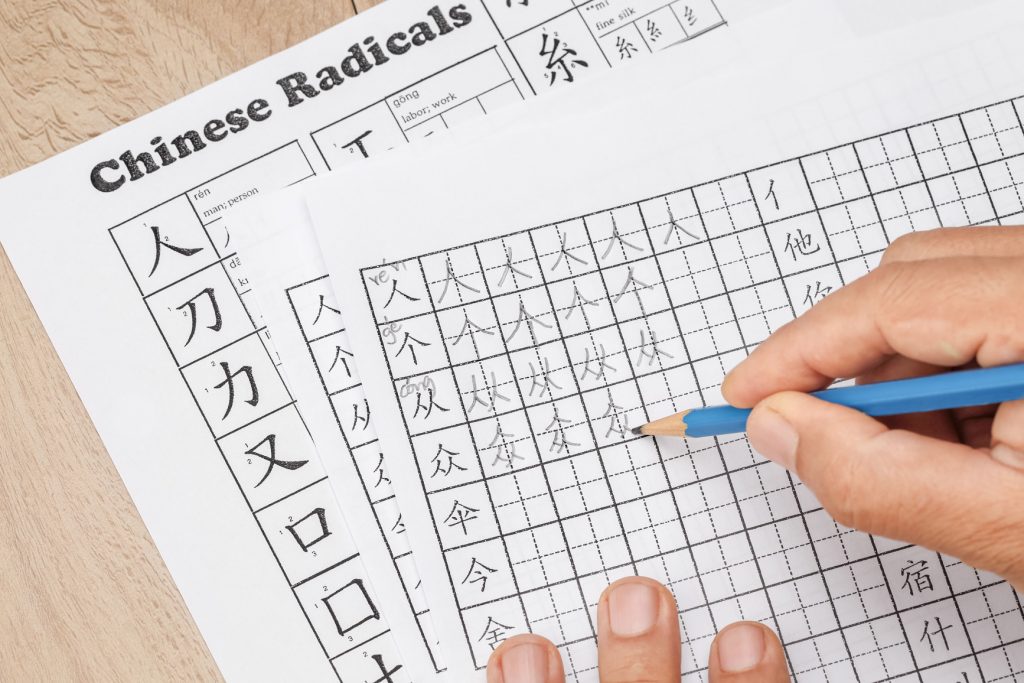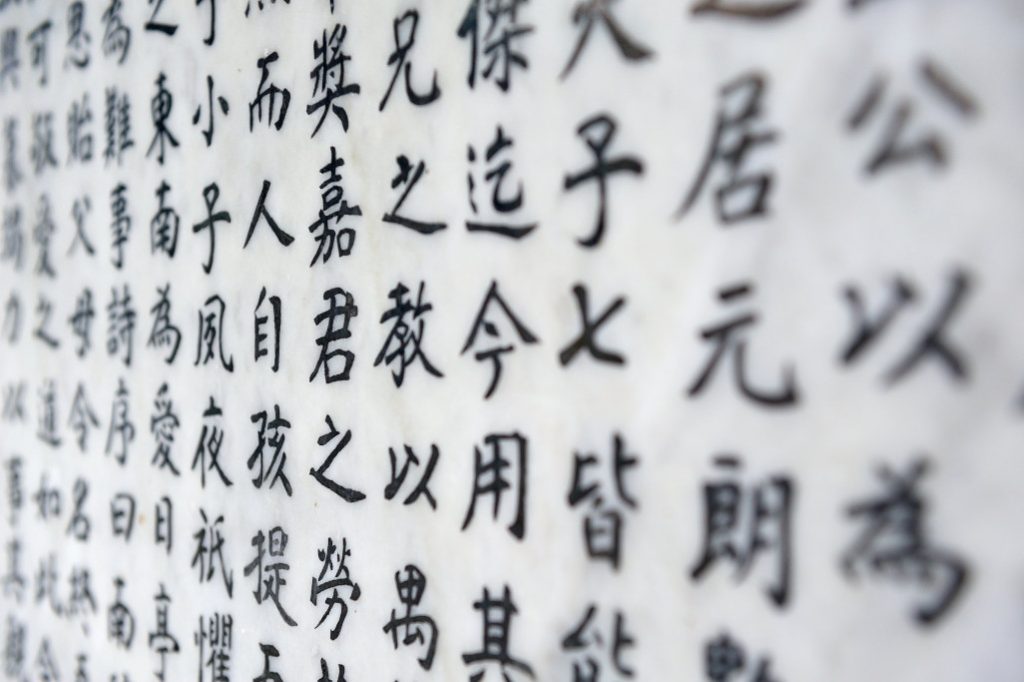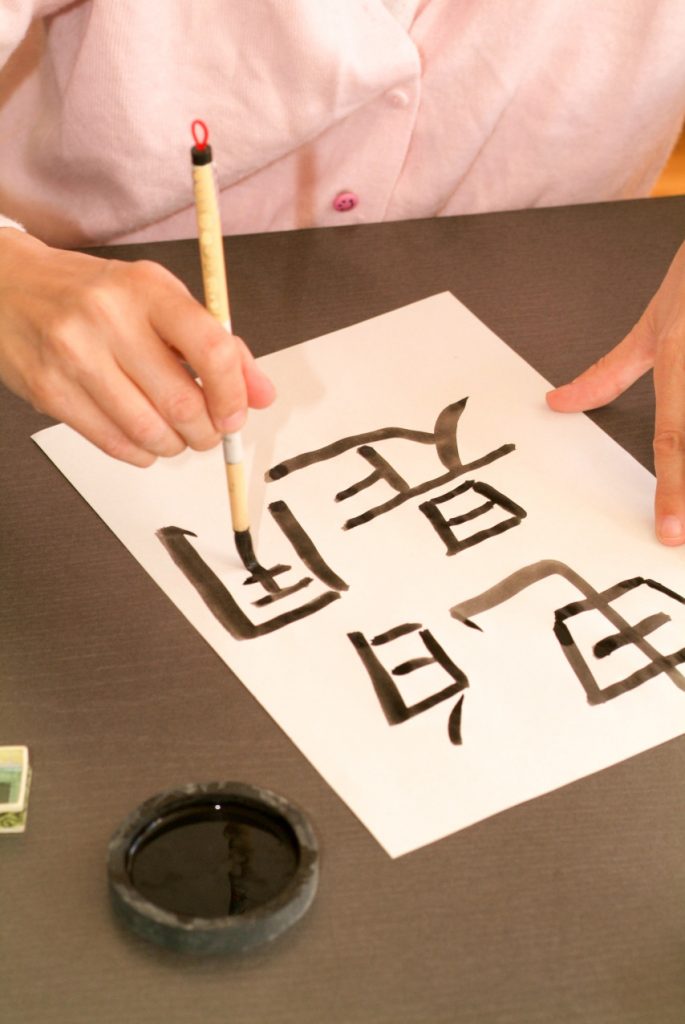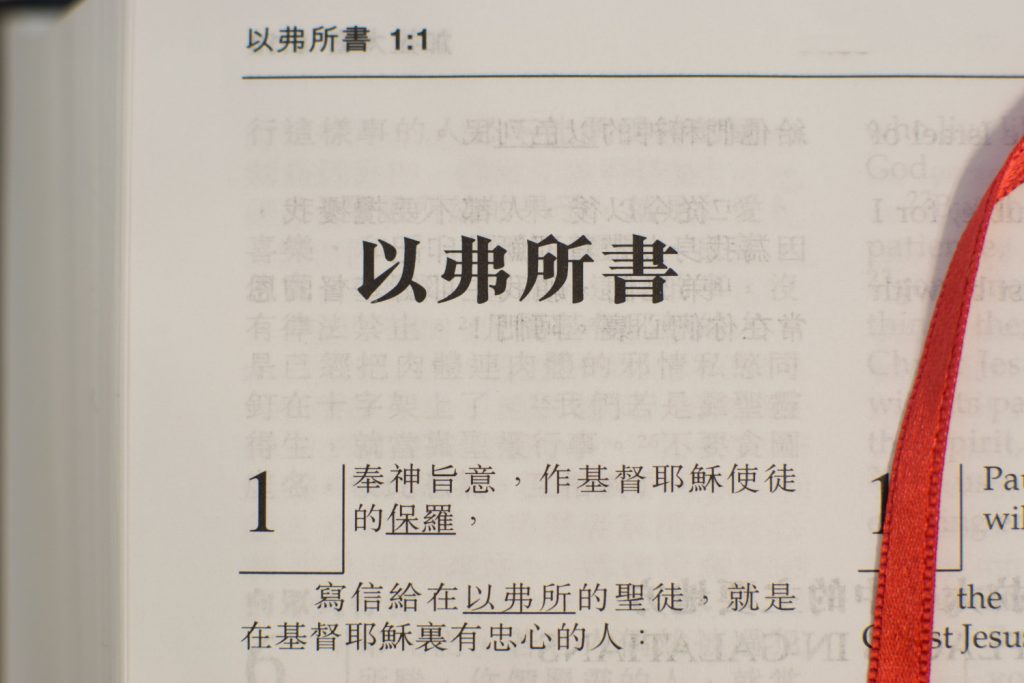How to Learn and Memorize Simplified Chinese Characters: A Guide for Beginners

Would you like to learn Chinese characters?
They’re actually pretty interesting to learn, as well as useful if you want to speak and read Chinese.
Chinese characters have been around for over 5,000 years, so we can be sure they’re not going to disappear any time soon.
They’ve become an inseparable part of Chinese language and culture, but they can seem confusing and hard to learn for a foreign learner, at first.
Don’t worry though, Chinese characters are not impossible to learn. In fact, you might realize they can be quite easy.

How Many Characters are in the Chinese Alphabet and How Many Do I Need to Learn?
First things first: You probably already know this, but if you want to learn Mandarin Chinese, you need to learn the Chinese characters. There’s no way around this.
You don’t need them for a casual conversation, or even for your daily life (if you don’t live in China). But if you’re serious about learning this language and visiting China, you will need to be confident reading and writing them.
You’re probably asking: “So how many Chinese characters are there and how many do I need to learn?”
Written Chinese language contains more than 50,000 characters, and more and more are added all the time.
But you don’t need to learn all of them (just like you wouldn’t need to learn all the words in the dictionary to speak English). A fluent Chinese speaking person typically knows around 2,000 characters, and if you want to be at a solid conversational level, it’s probably less than half of that for you — so you’ll need to learn fewer than 1,000 characters.
An Easy Way to Read the Chinese Alphabet
The Chinese language doesn’t have an alphabet like the English alphabet, so enter pinyin.
Pinyin takes Chinese characters and transliterates them into the Latin alphabet (the same alphabet that’s used for English and many other languages spoken in the western hemisphere).
For example 中国 – “China” would be transcribed into pinyin like this: Zhōngguó.
Pinyin will help you a lot when learning Chinese because it means you can start reading without learning Chinese characters.
The 6 Types of Chinese Characters
Chinese characters are often referred to as “Chinese symbols”, and you’ll find out that a lot of times they actually symbolize the word they mean.
But more often than not, you’ll just have to memorize them, as over time, and through simplification, most of them look different to how they originally did.
Before having a look into Chinese writing and learning how to write and read Chinese characters, let’s have a look at a quick overview of six types of Chinese characters:
- Pictograms – for example 山 (shān) – “mountain”
- Ideograms – e.g.下 (xià) – “down”
- Phonetic compounds – 红 (hóng) – “red”
- Combined ideographs – 果 (guǒ) – “fruit”
- Loan characters – 来 (lái) – “to come” from 莱 (lái) – “cereal” or “cereal plant”
- Transfer characters – 考 (kǎo) – “to test” and 老 (lǎo) – “old”
It’s always good to know the basics about each type. But to learn them quickly, don’t worry too much about terminology. Rather, start learning straight away.

How to Write and Read in Chinese – Quickly
You’ve probably seen 汉字 (hànzì) before. That’s what “Chinese characters” are called. You might find the word “hanzi” even in materials written in English, as it became widely used in educational materials.
So how to learn writing and reading hanzi quickly and effectively?
Break it down into steps and have a piece of paper and a pen ready – actually, many pieces of paper.
Start with the Basics
You won’t master the language if you don’t know its basics. To start you off with Chinese characters, learn the easiest ones first.
Here’s a list of some of the simplest characters in the Chinese language:
- 一 (yī) – “one”
- 二 (èr) – “two”
- 三 (sān) – “three”
- 四 (sì) – “four”
- 五 (wǔ) – “five”
- 六 (liù) – “six”
- 七 (qī) – “seven
- 八 (bā) – “eight”
- 九 (jiǔ) – “nine”
- 十 (shí) – “ten”
- 月 (yuè) – “month”
- 大 (dà) – “big”
- 水 (shuǐ) – “water”
- 人 (rén) – “people” or “person”
- 口 (kǒu) – “mouth”
These are only a few of the easy Chinese characters, but if you practice these, the more complicated ones will become easier and quicker to learn. That’s especially the case if you master these stroke order of these simple characters.
Write, Write, Write
Learning to write Chinese characters becomes much easier when you become an expert in the order of strokes. I dare say, you can’t learn how to write if you don’t know stroke order.
The essential guidelines are:
Write left to right, for example: 一 (yī) – “one”
Write top to bottom: 人 (rén) – “people” or “person”
Horizontal strokes before vertical strokes: 十 (shí) – “ten”
Diagonal strokes are left to right before right to left: 门 (mén) – “door”
Outside strokes before inside ones: 回 (huí) – “return”, “go back”
Stroke order guidelines for more complicated characters are easier to grasp, once you’re familiar with the easiest ones that have only a couple of strokes.
When you’re ready to practice writing, look up “stroke order” and you’ll find many websites with extremely helpful animations of Chinese characters being written based on these guidelines.
You can replay them and practice as many times as you want.
Also, have many sheets of paper ready – it’s best if you have characters worksheets.
The best way to learn Chinese characters is to write. And write. And write a lot.
You just need to write so much, until it becomes natural to you and you don’t even think about stroke order.
Practice with worksheets first, and then test yourself.
Online dictionaries or dictionaries you can download to your smartphone or tablet are also a great help. These usually have a handwriting option, but be careful, because most times they are not sensitive to the order of strokes.
Break the Characters Down and Visualize
It’s not a coincidence that Chinese characters are often called ideograms.
The term “Chinese ideograms” has its roots in history, when the traditional characters used to represent what they meant.
Traditional characters looked (and often still look) like the “idea” behind them – the meaning; hence “ideograms”.
Nowadays, it’s not as easy to recognize characters this way.
Chinese writing has become more simple, but reading Chinese has not for many.
Simplification of Chinese characters caused the resemblance between them and their meaning more or less disappearing, but often, you are actually able to guess the meaning, and that’s mostly thanks to radicals.
Radicals are components of Chinese characters that not only help you find a character in a Chinese dictionary (where they are listed under radicals), but can also help you guess the meaning.
For example, the character 水 (shuǐ) – “water” changes to a form of radical: 氵and keeps its meaning.
You can find this radical in almost every character that has something to do with water, for example: 海 (hǎi, “sea”) or 汁 (zhī, “juice”). In this case, the knowledge of the pronunciation of 十 (shí, “ten”) comes in handy, as 汁 (zhī, “juice”) sounds similar.
Even though simplified characters don’t look much like the meaning behind them anymore, you can find some that are still similar. Especially if you’re willing to try to look very hard.
For example:
- 女 (nǚ) – “woman”
- 鸟 (niǎo) – “bird”
- 口 (kǒu) – “mouth”
- 雨 (yǔ) – “rain”
Some Tips for Using Chinese Dictionaries
If you’re already using Chinese online dictionaries and know about the handwriting function, you know how much it can help not only to learn and practice, but also as a quick help to read and recognize.
Chinese book dictionaries are something else, and even though they are usually big, heavy and it might take longer to find what you need, I couldn’t recommend them more.
Learning the Mandarin alphabet (its characters) requires you to be familiar with its radicals.
Practice and test yourself with different dictionaries. You can find ones that organize their characters based on radicals, some do it alphabetically based on pinyin and some based on English alphabetical order.
Either way, it’ll broaden your knowledge and vocabulary, as most of these dictionaries contain additional words and phrases for each character.
Read Children’s Books and Parallel Texts in Chinese
The best literature to read when learning a new language are kids’ books and parallel texts.
The language in children’s books is simple, easy and most likely contains a lot of characters you are already familiar with.
You can also get a beginner’s conversation book; these are usually very helpful with their pinyin transcription and English translation.
After writing, reading Chinese characters is the second most important thing to learn.
So if you can, be sure to spend big amounts of time on both of them.
If your book contains audio, read and repeat out loud whenever you can. Chinese is a tonal language, and so catching the right pronunciation is crucial.
Check out some of these books to get you started with reading Chinese:
- Contemporary Chinese Short-Short Stories: A Parallel Text by Aili Mu and Mike Smith
- Mandarin Chinese for Beginners: Mastering Conversational Chinese by Yi Ren and Xiayuan Liang
- Chinese Conversation in Everyday Life 1: Sentences Phrases Words by Hongyang

Self-Discipline and Loads of Worksheets – You’re Ready to Start!
To start you off with Chinese characters, you’ll need to invest time and energy into writing and reading. But if you’re good at self-discipline, you can learn the basics pretty quickly.
Accepting the fact that Chinese characters are an inseparable part of the language, printing out your worksheets and opening a parallel textbook are your first steps to mastering Chinese characters.
It might not be the easiest thing you’ve ever done, but you’ll be extremely proud of yourself once you start noticing how natural the order of strokes and reading are becoming to you.
The beginnings are the hardest, but don’t give up and guaranteed, you’ll soon be an expert in Chinese characters.



Social